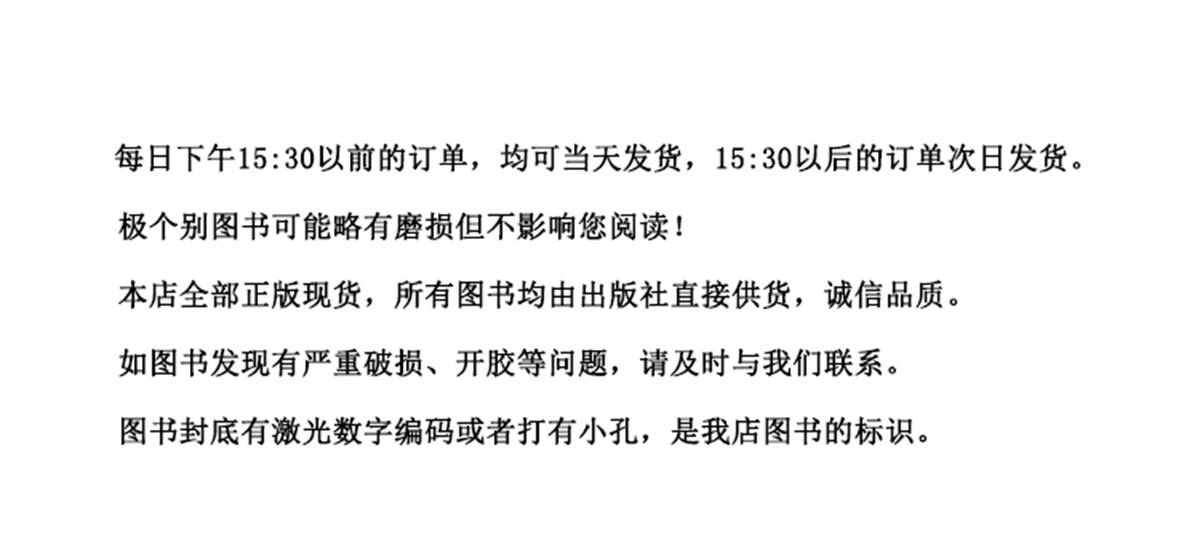![:移动对象管理模型、技术与应用 《:移动对象管理模型、技术与应用》[76M]百度网盘|pdf下载|亲测有效](/downpdf2/uploads/2024-01-20/72043c88ba0ebc94.jpg)
![《:移动对象管理模型、技术与应用》[76M]百度网盘|pdf下载|亲测有效](/downpdf2/uploads/2024-01-20/72043c88ba0ebc94.jpg)
:移动对象管理模型、技术与应用 pdf下载
内容简介
本篇主要提供:移动对象管理模型、技术与应用电子书的pdf版本下载,本电子书下载方式为百度网盘方式,点击以上按钮下单完成后即会通过邮件和网页的方式发货,有问题请联系邮箱ebook666@outlook.com


随着移动通信技术的不断发展和普及,人们对移动对象管理的需求越来越迫切。移动对象管理成为数据库研究领域的一个热门方向,它在许多领域都展现了广阔的应用前景。《移动对象管理:模型、技术与应用》比较系统地介绍了移动对象管理的相关内容,即移动对象管理模型(包括移动对象建模、移动对象更新、移动对象索引等),移动对象管理技术(包括移动对象查询、移动对象预测、移动数据不确定性研究等),移动对象管理应用(包括动态交通导航、动态交通网络、移动对象聚类分析、位置隐私保护等)。
《移动对象管理:模型、技术与应用》总结了外有关移动数据管理的研究工作和具有代表性的关键技术,并较详细地介绍了作者近年来的一些研究成果,具有较大的参考价值。
《移动对象管理:模型、技术与应用》的读者对象为高等院校计算机专业的本科生、研究生、教师,科研机构的研究人员以及相关领域的开发人员等
PartIMovingObjectsManagementModels
Introduction
1.1Background
1.1.1MobileComputing
1.1.2PositioningTechniques
1.2Location-BasedServices
1.3MobileDataManagement
1.4MovingObjectDatabases
References
MovingObjectsModeling
2.1Introduction
2.2UnderlyingModels
2.3GraphsofCellularAutomataModel
2.3.1CellularAutomata(CA)
2.3.2StructureofGCA
2.3.3TrajectoryofGCA
2.3.4TransitionofGCA
2.3.5Two-LaneGCA
2.4Summary
References
MovingObjectsUpdating
3.1Introduction
3.2UnderlyingUpdateStrategies
3.2.1BasedonThreshold
3.2.2BasedonLocationPrediction
3.2.3BasedonObjectGrouping
3.3ProactiveLocationUpdateStrategy
3.4GroupLocationUpdateStrategy
3.5Summary
References
MovingObjectsIndeng
4.1Introduction
4.2UnderlyingIndengStructures
4.2.1TheR-Tree
4.2.2TheGridFile
4.2.3TheQuad-Tree
4.3IndengMovingObjectsinEuclideanSpace
4.3.1TheR-Tree-BasedIndex
4.3.2TheGrid-BasedIndex
4.3.3TheQuad-Tree-BasedIndex
4.4IndengMovingObjectsinSpatialNetworks
4.4.1TheAdaptiveUnit
4.4.2TheAdaptiveNetworkR-Tree(ANR-Tree)
4.5IndengPast,Present,andFutureTrajectories
4.5.1IndengFutureTrajectory
4.5.2IndengHistoryTrajectories
4.6Update-EfficientIndengStructures
4.7Summary
References
PartIIMovingObjectsManagementTechniques
5MovingObjectsBasicQuerying
5.1Introduction
5.2ClassificationsofMovingObjectQueries
5.2.1BasedonSpatialPredicates
5.2.2BasedonTemporalPredicates
5.2.3BasedonMovingSpaces
5.3NNQueries
5.3.1IncrementalEuclideanRestriction
5.3.2IncrementalNetworkExpansion
5.4RangeQueries
5.4.1RangeEuclideanRestriction
5.4.2RangeNetworkExpansion
5.5Summary
References
MovingObjectsAdvancedQuerying
6.1Introduction
6.2SimilarTrajectoryQueriesforMovingObjects
6.2.1ProblemDefinition
6.2.2TrajectorySimilarity
6.2.3QueryProcessing
6.3DensityQueriesforMovingObjectsinSpatialNetworks
6.3.1ProblemDefinition
6.3.2Cluster-BasedQueryPreprocessing
6.3.3DensityQueryProcessing
6.4ContinuousDensityQueriesforMovingObjects
6.4.1ProblemDefinition
6.4.2BuildingtheQuad-Tree
6.4.3SafeIntervalComputation
6.4.4QueryProcessing
6.5Summary
References..
TrajectoryPredictionofMovingObjects
7.1Introduction
7.2UnderlyingLinearPrediction(LP)Methods
7.2.1GeneralLinearPrediction
7.2.2RoadSegment-BasedLinearPrediction..
7.2.3Route-BasedLinearPrediction
7.3Simulation-BasedPrediction(SP)Methods
7.3.1Fast-SlowBoundsPrediction
7.3.2Time-SegmentedPrediction
7.4OtherNon-LinearPredictionMethods
7.5Summary
References
UncertaintyofMovingObjects
8.1Introduction
8.2UncertainTrajectoryModeling
8.3UncertainTrajectoryIndeng
8.3.1StructureoftheUTR-Tree
8.3.2ConstructionandMaintenanceofUTR-Tree
8.4UncertaintyTrajectoryQuerying
8.5Summary
References
PartIIIMovingObjectsManagementApplications
9DynamicTransportationNavigation
9.1Introduction
9.2MovingObjectsManagementApplicationScenarios..
9.3DynamicTransportationNavigation
9.3.1HierarchyAggregationTree
9.3.2DynamicNavigationQueryProcessing
9.3.3DynamicNavigationSystemArchitecture
9.4Summary
References
10DynamicTransportationNetworks
10.1Introduction
10.2TheSystemArchitecture
10.3DataModelofTransportationNetworkandMovingObjects...
10.4QueryingMovingObjectsinTransportationNetworks
10.4.1ComputingtheLocationsThroughInterpolation
10.4.2QueryingMovingObjectswithUncertainty
10.4.3LocationPredictioninTransportationNetworks
10.5Summary
References
11ClusteringAnalysisofMovingObjects
11.1Introduction
11.2UnderlyingClusteringAnalysisMethods
11.3ClusteringStaticObjectsinSpatialNetworks
11.3.1ProblemDefinition
11.3.2Edge-BasedClusteringAlgorithm
11.3.3Node-BasedClusteringAlgorithm
11.4ClusteringMovingObjectsinSpatialNetworks
11.4.1CMONFramework
11.4.2ConstructionandMaintenanceofCBs
11.4.3CMONConstructionwithDifferentCriteria
11.5Summary
References
12LocationPrivacy
12.1Introduction
12.2PrivacyThreatsinLBS
12.3SystemArchitecture
12.3.1Non-CooperativeArchitecture
12.3.2CentralizedArchitecture
12.3.3Peer-to-PeerArchitecture
12.4LocationAnonyrnizationTechniques
12.4.1LocationK-AnonymityModel
12.4.2p-SensitivityModel
12.4.3AnonymizationAlgorithms
12.5EvaluationMetrics
12.6Summary
References
![《新型彩色显示器维修实测数据宝典》[77M]百度网盘|pdf下载|亲测有效](/downpdf2/uploads/2024-01-20/e1fe64e1acc538e7.jpg)
![《数据中台实战:手把手教你搭建数据中台董超华》[55M]百度网盘|pdf下载|亲测有效](/downpdf2/uploads/2024-01-20/306124345117b7cf.jpg)
![《官网机器人技术及其应用*2版张宪民十三五国家重点出版物现代机械工程系列精品教材9》[64M]百度网盘|pdf下载|亲测有效](/downpdf2/uploads/2024-01-20/15f9a2b6d2083939.jpg)
![《拿下Offer数据分析师求职面试指南数据分析师面试全流程技巧知识储备编程实战技能剑指offer数据分析师教材书籍》[93M]百度网盘|pdf下载|亲测有效](/downpdf2/uploads/2024-01-20/c98cec6adc739cb6.jpg)